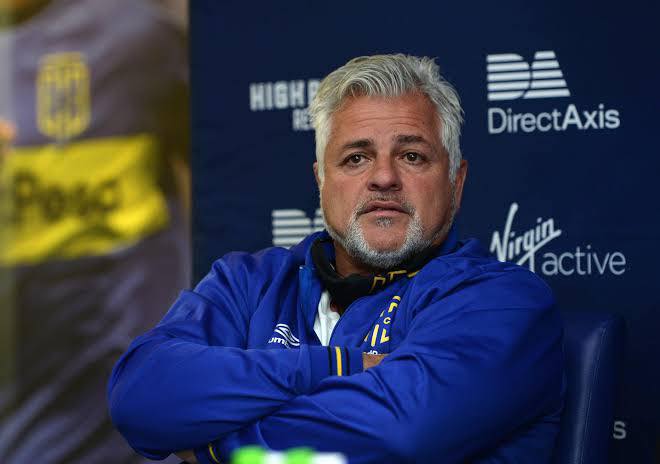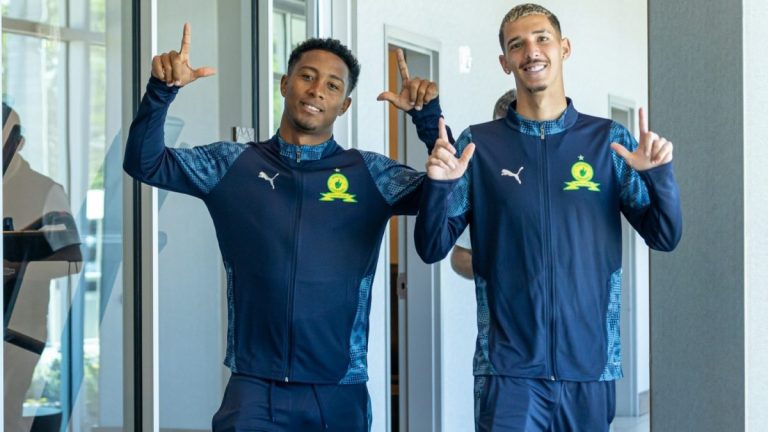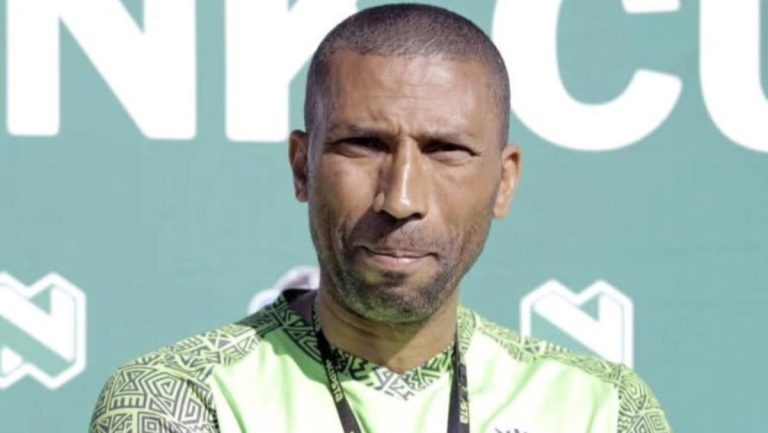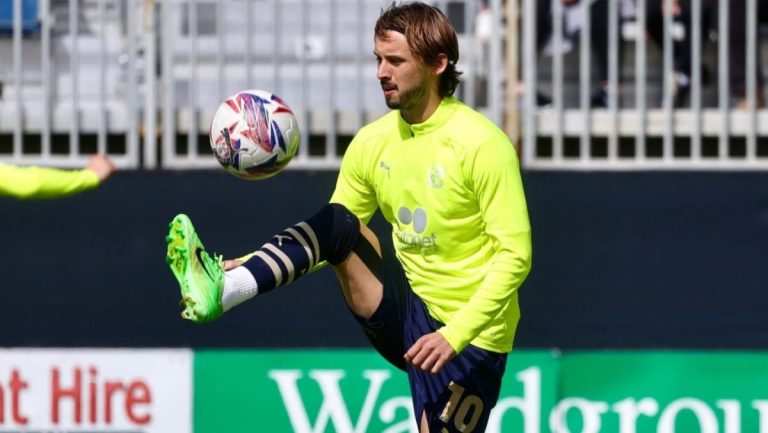𝐓𝐡𝐞 𝐬𝐚𝐥𝐞 𝐨𝐟 𝐭𝐡𝐞 𝐬𝐨𝐮𝐥 𝐨𝐟 𝐂𝐢𝐭𝐲 𝐟𝐨𝐫 𝐩𝐫𝐨𝐟𝐢𝐭 – 𝐰𝐡𝐲 𝐭𝐡𝐞 𝐝𝐞𝐦𝐢𝐬𝐞 𝐨𝐟 𝐂𝐚𝐩𝐞 𝐓𝐨𝐰𝐧 𝐂𝐢𝐭𝐲 𝐰𝐚𝐬 𝐬𝐥𝐨𝐰 𝐛𝐮𝐭 𝐜𝐞𝐫𝐭𝐚𝐢𝐧. 𝐌𝐦𝐚𝐬𝐞𝐤𝐞𝐩𝐞 𝐌𝐚𝐭𝐬𝐞𝐛𝐚𝐧𝐞 looks at some of the factors that may have contributed to the demise of the once-promising Cape Town City.
When John Comitis introduced Cape Town City to the South African football land-scape in 2016, it was supposed to be a model professional football team in a sometimes chaotic South African Football League.
This is in a professional football league where some teams still struggle for world class facilities.
Of course, some teams have money, but are not willing to build or invest in their own facilities to sustain their teams. They joined a league where teams struggle to attract sponsors, with some top-flight teams not even having a youth academy, but Cape Town City had it all.
City had a brilliant training camp with stunningly manicured fields at Hartleyvale Training Ground in Cape Town. They played their home matches out of the majestic Cape Town Stadium. Unlike many teams that mushroomed in the PSL in the last 15 years, City have managed to attract good support in the Western Cape, and they even showed modern thinking, offering season tickets.
They had multiple major sponsors including banking giants FNB, Umbro, Coca Cola, Virgin Active, SportPesa, Lift as an airline partner, while Catapult was responsible for tracking athlete data. All of these well thought-out partnerships were aimed at making City a different football team in the league. City have working youth development structures, and many teams in the league cannot dream of such. At the helm of the club is John Comitis, an experienced football administrator, who has more accolades to his name than losses. It would not even be a lie to say Cape Town City was the envy of most teams, and a lot was expected from them.
The club, which has grand plans of building its own stadium, now face a new, painful reality. They will be playing in the Motsepe Foundation Champions in the 2025/26 season. This is the second tier of South Africa’s football. Their relegation was confirmed when they lost 1-0 to Orbit College in the Relegation Playoffs.
But where did it all go wrong, because things were not always bleak for Cape Town City? 𝐌𝐦𝐚𝐬𝐞𝐤𝐞𝐩𝐞 𝐌𝐚𝐭𝐬𝐞𝐛𝐚𝐧𝐞 looks at some of the factors that may have contributed to the demise of the once-promising Cape Town City.
𝘼 𝙧𝙤𝙢𝙖𝙣𝙩𝙞𝙘 𝙡𝙤𝙫𝙚 𝙨𝙩𝙤𝙧𝙮 𝙩𝙝𝙖𝙩 𝙨𝙩𝙖𝙧𝙩𝙚𝙙 𝙬𝙚𝙡𝙡
The Comitis family was out of football 11 years ago after selling their stake in Ajax Cape Town. This was the end of a bitter feud with Efsthatiou family. For a while, the Comitis family was ‘out’ of football, but before long, they would be back. They bought Mpumalanga Black Aces in 2016, and announced themselves with some sleek innovations.
Their start was impressive on and off the field. They recorded more successes than failures in the first three seasons. It was on the field that they impressed, and they had to because they bought the status of a Mpumalanga Black Aces side that had done well a season before, finishing fourth on the table.
Their first season in 2017 saw them finish third under Eric Tinkler, and the team’s brilliant form saw Lebohang Manyama win Footballer of the Season, with Aubrey Ngoma also one of the best players in the league. On social media, they were ‘in touch’ with the regular fan, and that made them a darling of everyone.
𝙎𝙩𝙪𝙣𝙣𝙞𝙣𝙜 𝙘𝙤𝙢𝙚𝙗𝙖𝙘𝙠 𝙛𝙧𝙤𝙢 𝙖 𝙨𝙚𝙩-𝙗𝙖𝙘𝙠
Their impressive inaugural season attracted the eyes of many, and led to Eric Tinkler prized away by SuperSport United. City did not panic. They had an ace up their sleeve, and true to their novel and innovative ways, they brought in Benni McCarthy, a darling of South Africa football, and a son of the Cape, even without any senior coaching experience. It did not matter though, Benni was and remains loved by all.
By all accounts, the move was to pay dividends, and it did. Benni arrived on the back foot after the club. Fresh from joining, the sold their best players Lebohang Manyama to Turkey for millions. This was just after the season had started. As Benni was rebuilding a team around another star Aubrey Ngoma, City decided to cash in again, this time to Mamelodi Sundowns. But the cost? City dropped down to fifth at the end of the season. The big positive was a place in the MTN8 final, but they lost to SuperSport United.
The following season, McCarthy made Comitis believe he was a genius. Benni won City their first title, the MTN8. City also finished fourth in the league. McCarthy was now a legend in Cape Town. Many were calling for him to even coach Bafana Bafana or his former club Orlando Pirates, but at City, things were changing.
Again, City prioritized profits. Lyle Lakay was sold to Sundowns and Ayanda Patosi, a start player for City, went to Iran, and even though it was a loan, City were compensated. Reliable defender Robyn Johannes left for Bidvest Wits.
𝙋𝙖𝙩𝙞𝙚𝙣𝙘𝙚 𝙤𝙧 𝙨𝙪𝙧𝙚 𝙙𝙚𝙖𝙩𝙝?
There may have been successes after the 2019/20 season, but the deeper truth is that this is the season where City’s fortunes started to change. Sure, the money was still coming in.
By the start of that season, they had sold Gift Links and Ayanda Patosi to overseason teams, Teko Modise, Judas Moseamedi, Mark Mayambela and Roland Putsche all left. Mduduzi Mdantsane, Mpho Makola and Abbubaker Mobara were players that came in to make an impact. But it was not enough. City were knocked out of the MTN8 in the first round, by match-day nine, City had lost four league matches, drawing five, and winning just one.
That is eight points after nine games. There was no synergy in the team. Confidence was at all time low. Benni McCarthy was having a go at the media, and his relationship with the City owners was no longer rosy. City showed they can be ruthless when they pulled the plug in November 2019. For the first time, the club chose to go international in their coaching appointment, and boy did they live to rue that calamitous mistake?!
𝙅𝙖𝙣 𝙬𝙞𝙩𝙝 𝙖 𝙜𝙧𝙚𝙖𝙩 𝘾𝙑, 𝙗𝙪𝙩 𝙛𝙤𝙧 𝙖 𝙬𝙧𝙤𝙣𝙜 𝙖𝙨𝙨𝙞𝙜𝙣𝙢𝙚𝙣𝙩
In came the well-travelled, experienced Jan Olde Riekerink. His CV reflected stints with Turkish giants Galatasaray and Dutch side Heerenveen. Riekerink had won the Turkish Cup. He had coached players like Fernando Muslera, Felipe Melo, Allex Telles, Wesley Sneijder, Lukas Podolski and Burak Yilmaz.
That was enough to convince even the naysayers that this is the real deal. Surely, this is a big coach who had dealt with big characters, and worked at the highest level. This is what John Comitis may have though. Only two years, and Riekerink would have undone years of positive at City, and his damage would last the next five years.
𝙍𝙞𝙚𝙠𝙚𝙧𝙞𝙣𝙠 𝙖𝙩 𝙩𝙝𝙚 𝙬𝙝𝙚𝙚𝙡, 𝙗𝙪𝙩 𝙜𝙤𝙞𝙣𝙜 𝙣𝙤𝙬𝙝𝙚𝙧𝙚 𝙨𝙡𝙤𝙬𝙡𝙮…
The first season of his arrival saw City finish sixth, the club’s lowest finish in their history. He lost seven of his first 20 league matches, drawing four and winning nine matches.
The losses may have been many, but City were convinced Riekerink could turn things around. He was seen as a brilliant man-manager, and the attacking football he wanted to play brought some home.
He was handed the team for a second season, and the club tried to help him in the market. They bought back Aubrey Ngoma on loan, Terrence Mashego, who was impressing at TS Galaxy also arrived, and there was also Zambian Justin Shonga, who joined from Pirates via Tshakhuma Tsha Madzivandila. Top scorer Kermit Erasmus, Sage Stephens and Ebrahim Seedat left.
Erasmus was sold for millions, and his arrival would hurt on the pitch, as the goals dried, but City was happy, they were swimming in the cash.
By match day 26, City had lost eight league matches, won nine, drew nine, and they could not take it anymore. They sacked their long-haired gaffer. He left the club seventh on the table, and that is where they would finish. For the second running season, Riekerink was responsible for City posting their worst ever finish in the league. The club was consistently going down, rather than up.
𝘼 𝙛𝙤𝙤𝙩𝙗𝙖𝙡𝙡 𝙩𝙚𝙖𝙢 𝙤𝙧 𝙖 𝙧𝙚𝙘𝙮𝙘𝙡𝙞𝙣𝙜 𝙘𝙤𝙢𝙥𝙖𝙣𝙮?
One of the things that Cape Town City seemingly believe works for them is their recycling. Players like Aubrey Ngoma and Lyle Lakay have had two or more stints at the club. When things do not seem to go well for City, instead of thinking forward, their management look back at their glory days and think, who gave us the greatest joy.
If that person is available, they go back to him and say, deliver us the same high. Who would say no, especially if they too did not find the grass to be greener on the other side? To them, this felt like moving forward, but in ruth, the team, or their project, was moving backwards.
After firing Riekerink, John Comitis thought bringing back Eric Tinkler would be a masterstroke. The move looked to be a work of genius from the famed silver-haired owner. Tinkler had a brilliant MTN8 campaign, but lost in the final to Mamelodi Sundowns. The Bafana Bafana legend did well in the league too. City finished second, their highest ever finish in the league, and for the first time, they qualified for the CAF Champions League.
Hugo Marques was named Goalkeeper of the Season. This was a brilliant season. The disaster of Riekerink was all forgotten.
The following season, best keeper Marques left under bizarre circumstances, but City were not worried. Darren Keet, a South African international was there, but he was shipping in more goals than he was supposed to keep them out. The cash-cow had to deliver, and Terrence Mashego was quickly sold to Sundowns, Craig Martins to Pirates. City, out of their own volition, dismantled their back four and they suffered for it.
By match-day eight of the 2022/23 season, they had lost two matches and drew three. It was not looking good, but like they did with Riekerink, City kept faith with Tinkler, and by the end of the season, they had lost nine times, drew nine and won 12. They finished fourth, but still, they lost their best players in Fasika Induba and Mdu Mdantsane.
The money came in. The 2023/24 season saw City finish fifth, and to the club, this looked like stability, but behind the scenes, things were not going well. Tinkler had again won 12, lost nine, and drew nine. City again thought if they continued with Tinkler, then things would get better. They were wrong. The team, and not Tinkler, cashed in on their best players. Khanyisa Mayo left, he was not replaced, and the same was for Keanu Cupido and Brice Ambina. Tinkler’s last season with the club, the one that would ensure the team’s relegation, saw him lose five of the first 10 matches drawing two. City were 12th on the table, and they never recovered.
Think of the goal contributions of Erasmus, Patosi, Bradley Ralani, Fagrie Lakay, Khanyisa Mayo, Gift Links, all leaving, all bringing in the millions. The defendive work of Edmilson Dove, Taariq Fielies, Keanu Cupido, Fasika, Brice Ambina, the experience of Thato Mokeke, some bringing the club more millions, but the money never revested. What remains is a club being the name, but on the field, lacking the quality that made it great, and this was the case with City.
𝙏𝙝𝙚 𝙛𝙞𝙣𝙖𝙡 𝙣𝙖𝙞𝙡 𝙞𝙣 𝙩𝙝𝙚 𝙘𝙤𝙛𝙛𝙞𝙣
Once again, instead of looking forward, the club looked back. John Comitis though, if Muhsin Ertugral had done well in the country in the past, he can still replicate the same heroics. And the Turk flattered in the beginning, but he was later to deceive. He started with back to back wins against Orlando Pirates and Kaizer Chiefs. City chose to “remain humble”. They thought they were back.
Muhsin was their miracle worker. What they did not realise was that he had just applied a quick fix to what was already a porous foundation. The structure was dilapidated. The rust was everywhere, but new paint made everyone at City believe that a fix job was underway.
But the rust was too stubborn and it persisted. Very soon, the new paintwork was gone. The team’s real problems re-emerged. In 13 matches, City lost seven, drew three, and added one more win to the two against Pirates and Chiefs. The momentary high was gone. Everyone was back to their senses. The fake ‘humility’ evaporated. City were 13th on the table, but there looked to be hope. Well, this was until Royal AM were expelled from the league and the fall from grace was now inevitable.
Diogo Peral and Roger de Sa tried in vain to save the club as they lost three of the remaining six matches, drawing two and losing one. Oh, there is no need to even talk about why City would think Peral and De Sa were the perfect fit to save them. This time, their recycling failed.
The playoffs gave them another chance, another hope. But with the kind of squad they had, no strategy, no direction and too many kids, they were never going to survive. Their end was just a matter of time, and eventually it was confirmed by Orbit College. Now they are gone, and it could be for good. That is if they do not change, and if they don’t, they will not come back.
𝙎𝙚𝙡𝙡𝙞𝙣𝙜, 𝙗𝙪𝙩 𝙣𝙤𝙩 𝙧𝙚𝙞𝙣𝙫𝙚𝙨𝙩𝙞𝙣𝙜 𝙩𝙝𝙚 𝙧𝙞𝙜𝙝𝙩 𝙬𝙖𝙮
There has been lack of foresight, and most of the time, poor scouting. And who does the scouting for the club anyway? He should be fired. Sure, in football, some players may struggle, and others will do well. But how do you explain letting go of Sage Stevens, only for him to be a legend at your rivals?
You let go of Zuko Mdunyelwa, you do not even make money off him, and he goes on to play for the best club in the league and win the league multiple times. You then bring in players like Marc van Heerden, Mpho Makola, Fortune Makaringe, Haashim Domingo, Thulani Serero hoping to take them back to their heydays.
You do not leave it there. You consistently go for some unknown players like Darwin Gonzales, Kajally Drammeh, Jo Paciencia, and Ramazani Tshimanga, and you hope that at some point, you will hit the jackpot. You go to Europe to bring in Lorenzo Gordinho, who was not so bad, and a terrible Khanya Leshabela, who would not even finish six months. There have just been too many misses than hits in terms of the club’s transfers. But what is the reason for that?
Where is the thinking in a club that thought a 15 year old Emile Witbooi, would be their saviour? Sure, Emile is uber talented, but the kid is just a baby. The script is nice, though. This was a kid coming to play in the same team where his dad Surprise Ralani made a name for himself in the PSL.
French striker Amadou Soukouna was just enjoying sea food in Bangkok, Thailand, Kamohelo Mokotjo, who wanted to feel the sea breeze after dealing with the hot sun of Ga Sekhukhune, and Serero, a child star in the country who came back with bags of money from Europe and the UAE, looking for something to keep him busy back home.
There is no need to mention Carlinhos, an Angolan with a Brazilian name, but no talent close to the Brazilians.
Now, there is no doubt that City sacrificed stability and progress for money. And even with the money, the club never made any big moves that could really improve the team, either from the country or outside.
Who replaced their best ever keeper in Hugo Marques? Abbbaker Mobara and Craig Martin were great right backs, a competition to captain Thamsanqa Mkhize. They both left, and Mkhize’s form dipped, but he continued to play because there was no competition.
Their best centre pairing was Taariq Fielies and Keanu Cupido, both never replaced. Terrence Mashego and Lyle Lakay were brilliant left backs, both sold, both never replaced by the same quality. Thato Mokeke may have been old, but he was still effective, he left, Brice Ambina left a gaping hole in midfield, and the creativity void left by Mduduzi Mdantsane was clear for all to see. Fagrie Lakay, Khanyisa Mayo, Surprise Ralani and Kermit Erasmus brought in the cash, but in turn, the club thought the academy and some free agents would deliver the goods.
What they did not know was that it is almost impossible to hit the same jackpot twice. Getting one successful academy player and one great foreigner on the free does not mean you will get the same every season. The results of all of this? A place in the more robust National First Division, where an immediate return is never guaranteed. Lessons? Do not put money ahead of real team growth, because in football, profit, important as it may be, does not translate to growth.
𝙏𝙝𝙚 𝙚𝙡𝙚𝙥𝙝𝙖𝙣𝙩 𝙞𝙣 𝙩𝙝𝙚 𝙧𝙤𝙤𝙢 – 𝙄𝙨 𝘾𝙤𝙢𝙞𝙩𝙞𝙨 𝙖𝙣𝙤𝙩𝙝𝙚𝙧 𝙅𝙤𝙢𝙤 𝙎𝙤𝙣𝙤?
There was a certain way football was run in the past, and that does not work today. Even the great, street-smart Bobby Motaung made this admission some days ago.
Back in the day, club owners drove around the country, sometimes travelled to Africa to look for talent. They did this themselves. They attended training sessions and told coaches who to play. They waltzed into change rooms at half time and told coaches who to sub off and who to sub on. Things improved a bit.
Agents got into the picture. They started calling club owners to tell them who to sign and who to let go. Club owners listened. They also recommended coaches. A club owner on his own made the decision. There was little attention to data, the system the would-be coach plays, whether it is similar to what the new team plays, the demographics in the team, the challenges, and if that coach has shown that he is good enough to thrive in such an environment. And this is not to say club owners are non-thinking beings.
But football cannot be a one-man show
Why am I asking this? If I was to ask, top of your mind, who is Cape Town City’s sporting director or technical director? Maybe the current one, or any that the club had in the last nine years? Name one? Who headed recruitment? Who watched on loan players? Who decided on the new coaches and who decided if the coach should be sacked? Who negotiated contracts? Can you think of anyone else at City other than John Comitis? Football has changed, and while other business-related matters at City look to be modern, their running of a football team still says ancient. And the reality is that Cape Town
City is not just a business, it is a football club. Sure, it made them profits in player sales and sponsors, and in any business, that is incredible success. But in football, where you have to either win competitions, or win matches to stay at the highest level, making monetary gains, and no point gains, means you were fast plunging into obscurity, and that is where Cape Town City find themselves. The club has now gone over the proverbial ‘adapt or die’ rubicon, they are now forced to change or be lost forever.





